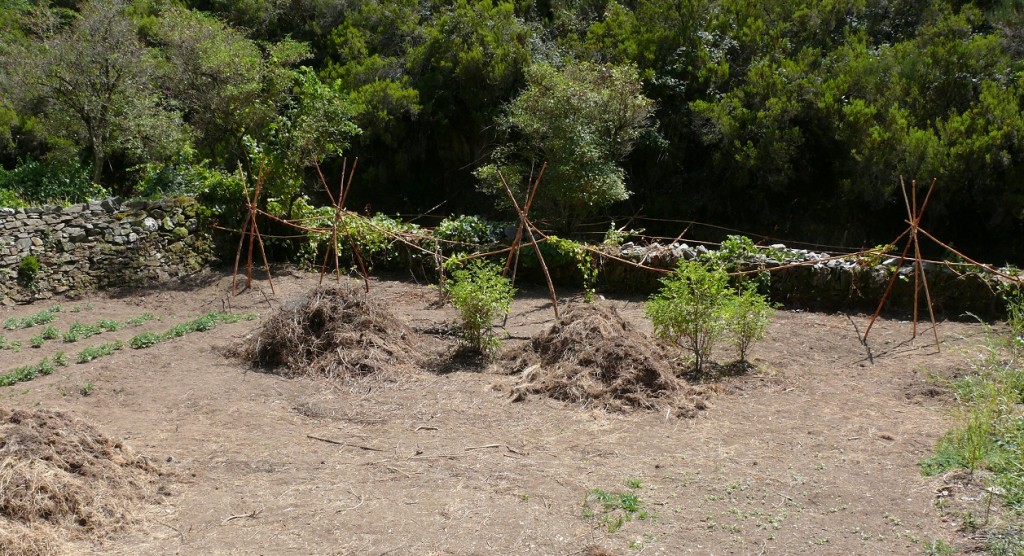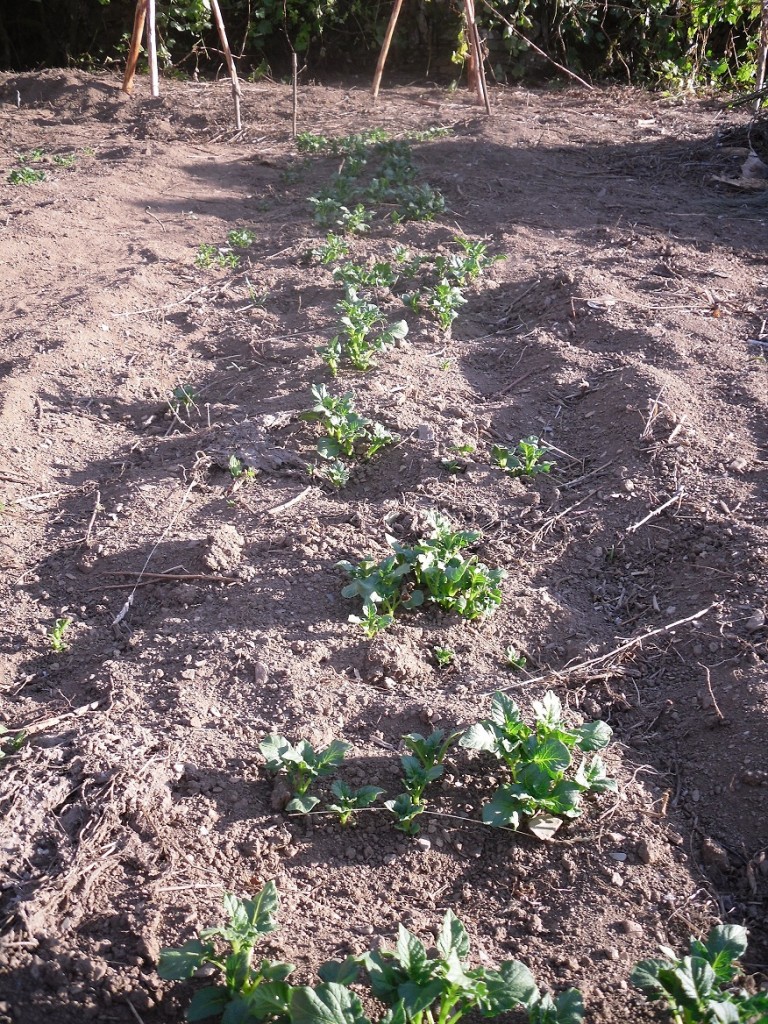It’s been awhile since I’ve reported on activities, but we’ve got an enormous amount done over the past weeks. It’s been our busiest time of year in terms of number of volunteers, and we’ve been fortunate to have had an amazing group here, both in terms of their numbers and their energy. Although I’ve been pretty much dedicated to cooking gigantic meals and locating lost tools, they’ve done incredible things.
Summer is a funny time of year here. Although the garden is at it’s most lush and it’s a wonderful place to be, there’s not actually that much that needs to be done bar constant watering and weeding. So we’ve been busy with other projects, including getting our last field ready for action. This is half a field which was chock full of brambles and we’d never touched bar planting some willows along the border. I so wish we’d taken some photos before we started!
All the brambles were chopped back then dug out, which was a tremendous amount of work. Brambles grow back astonishingly quickly from even a tiny root left in the soil, so every scrap needed to come out. We now have massive piles of bramble rubbish drying in the sun, waiting for winter when I’ll burn it.
Brambles in stone walls are an ongoing problem. The best solution is to yank them out before they get established, roots and all. When they’re young and haven’t developed a strong root system that’s an easy enough job, but if you’ve the misfortune to already have mature ones it’s not so easy. Pulling them out is sometimes possible with a strong arm and stronger gloves, but risks dislodging stones in the wall. The other solution is to just keep cutting them back. If you keep cutting them back they’ll eventually exhaust themselves and die, or so it’s said. Personally I’ve not known it to work, but the alternative is glyphosphate and that’s a route we’re not ready to go down just yet. We’ve chopped them back, but I went to examine the wall yesterday and it needs chopping back again already. I’m not 100% confident that we’ll stay on top of this enough to actually beat them.
Funnily enough, I’ve just searched a forum I sometimes use looking for advice on combating brambles in walls and discovered a plea for help from myself posted virtually six years ago to the day. Obviously brambles have been a part of my life for some time and I’ve still not found the easy answer.
Back to our field …
Once the brambles and other vegetation were cleared back it was possible to reach some vines which had been growing along the wall. In previous years we’ve only ever been able to access these from the stream, so it’s great to have them accessible.
The bushes you can see in the middle are elderberry. You can never have enough of them as far as I’m concerned, and the fact that these damp loving trees are growing here indicates that there’s a water route underneath.
Finally, we planted potatoes. An odd crop to plant this late in the season on a patch of land which falls into shadow fairly early in the winter, you might think. But they are a leafy crop which will grow fast to protect the newly uncovered soil. The leaves will provide valuable organic material for soil improvement when they die back, and the potatoes themselves, and I’m hoping for a few new potatoes for Christmas, will force us to dig over this patch again and thus discover any bramble roots that we missed first time around.
Whilst I detest brambles and seem to spend so much of my life battling them, I can’t say I’m disappointed that our neighbours aren’t so dedicated to their destruction. The brambles all around us are producing the most delicious fruit just now, a handful of which go just beautifully with our pears in a crumble.




Leave a Reply